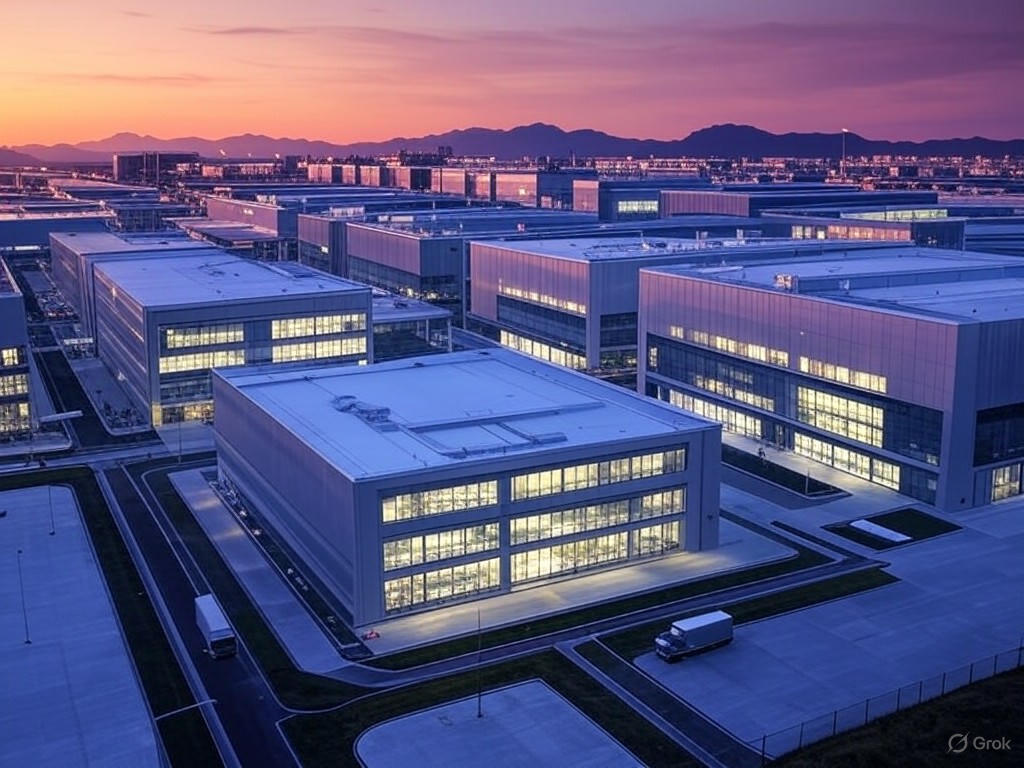Global Chip Shortage: Taiwan’s Role in Tech Supply Chains
Spot News 24 Editorial
Ah, the mighty microchip— that tiny titan of technology that powers everything from your smartphone to the smart toaster that burns your bread just right. Picture this: a world where cars sit idle on lots because a single chip is missing, or where global economies hiccup like an old steamboat engine sputtering along the Mississippi. It’s no tall tale; we’re living it. Taiwan, that industrious island nation, holds the lion’s share of the world’s semiconductor production, churning out the lifeblood of modern innovation. But as US-China tensions simmer like a pot of bad coffee, and chip shortages leave us all scratching our heads, we must ponder: How does this dominance shape global tech supply chains? From a center-right vantage, it’s a story of market ingenuity clashing with geopolitical storms, where free enterprise ought to steer the ship, not heavy-handed governments. Let’s unpack this yarn, with a nod to the free markets that built our world and a wary eye on the perils of overreach.
The Heart of the Matter: Taiwan’s Unrivaled Role in Chip Dominance
Taiwan’s semiconductor industry, led by giants like TSMC (Taiwan Semiconductor Manufacturing Company), isn’t just a cog in the machine—it’s the whole engine. For decades, this small nation has cornered the market on advanced chip fabrication, producing over 90% of the world’s cutting-edge semiconductors. It’s a testament to the power of free-market competition: innovative companies, driven by profit and ingenuity, have turned Taiwan into the Silicon Island of our times. But amid rising US-China frictions, this dominance exposes vulnerabilities that ripple through global trade like a stone skipped across a pond.
Consider the chip shortage that gripped the world in recent years, a saga that began with pandemic disruptions and escalated into a full-blown crisis. Automakers halted production lines, tech firms delayed launches, and everyday folks waited longer for gadgets. Taiwan’s central role means that any hiccup—be it a natural disaster or geopolitical saber-rattling—can send shockwaves worldwide. As The Wall Street Journal aptly notes, “Taiwan’s control over chip manufacturing has become a geopolitical flashpoint, with the U.S. and China vying for leverage in the tech arms race.” This isn’t just about economics; it’s about geopolitics, where Taiwan’s strategic position in the South China Sea makes it a pawn in a larger game.
From a center-right perspective, this highlights the brilliance of unfettered markets. Taiwan’s success story is one of entrepreneurial spirit and limited government interference, allowing companies like TSMC to innovate without the dead weight of excessive regulation. Yet, the current tensions underscore a cautionary tale: when governments meddle too much, they risk distorting these natural efficiencies. Instead of imposing tariffs or subsidies that prop up domestic industries artificially, we should champion open trade policies that encourage diversification and competition.

The illuminated halls of a TSMC fabrication plant at dusk, symbolizing Taiwan’s quiet command over the global tech pulse, where innovation hums under the stars amid rising shadows of international rivalry.
Analyzing the Ripple Effects: US-China Tensions and Global Trade Disruptions
Dig a little deeper, and you’ll see how Taiwan’s semiconductor supremacy intertwines with the broader tapestry of global trade and geopolitics. The United States, once a leader in chip production, now relies heavily on Taiwanese imports, importing over $100 billion worth of semiconductors annually. Meanwhile, China’s aggressive push for technological self-sufficiency—fueled by initiatives like “Made in China 2025”—has ratcheted up the pressure. This has led to export restrictions, trade wars, and a scramble for alternatives, all while the world grapples with shortages that expose our interconnected dependencies.
The analysis here is straightforward: free markets thrive on specialization and exchange, but when geopolitical winds blow, they can upend the delicate balance. US efforts to “reshore” semiconductor production, such as the CHIPS Act, might seem prudent on the surface, but let’s not forget the lessons of history. Government interventions often lead to inefficiencies, bloating costs and stifling innovation. As IEEE Spectrum warns, “Taiwan’s dominance in fabs creates a single-point failure in the supply chain, exacerbated by U.S.-China decoupling efforts.” Indeed, while diversification is needed, it should come from market forces, not mandates from Washington or Beijing.
This tension isn’t just about chips; it’s about the soul of global commerce. Traditional values of self-reliance and fair play are at stake. Imagine a world where countries barter technology like old-time traders swapping furs—exciting, perhaps, but risky if not handled with a steady hand. The chip shortage, which peaked in 2021 and lingers today, has cost the global economy hundreds of billions, according to estimates from industry analysts. It’s a humorous irony, really: our quest for ever-smaller, faster tech has made us as vulnerable as a riverboat captain in a storm without his compass.
Yet, balance demands we acknowledge the positives. Taiwan’s efficiency has driven down costs and spurred technological leaps, benefiting consumers worldwide. Companies have adapted, with firms like Intel and Samsung investing in new fabs outside Taiwan, a market-driven response that’s more effective than any government decree.
Evidence and Implications: The Data Behind the Drama
Let’s ground this in evidence, shall we? Data from the Semiconductor Industry Association shows that Taiwan produces over 60% of global silicon wafers and nearly all advanced logic chips, a monopoly that’s both a boon and a bottleneck. During the 2021 shortage, auto manufacturers like Ford and Toyota faced delays, with production drops attributed directly to Taiwan’s supply constraints. Geopolitically, US-China trade tariffs have escalated, with the U.S. restricting exports of advanced tech to China, as detailed in a Foreign Affairs piece. This has prompted China to accelerate its domestic production, potentially leading to overcapacity and market distortions if not managed through open competition.
Humor me for a moment: it’s like two old rivals arm-wrestling over a prized fishing spot—both end up tipping the boat. From a center-right lens, the solution lies in reducing barriers to trade and letting the market dictate flows. Limited government intervention, such as targeted incentives for R&D rather than broad subsidies, could encourage diversification without picking winners and losers. As Bloomberg reports, “The global chip shortage has underscored the need for resilient supply chains, but protectionist policies risk fragmenting the market further.”

A detailed infographic mapping the flow of semiconductors from Taiwan to key markets, illustrating the intricate web of global trade that binds nations together, even as tensions threaten to fray the threads.
In practical terms, evidence points to innovation as the antidote. Private-sector investments in alternative manufacturing hubs, like those in the U.S., Europe, and even India, are already underway. This organic evolution respects traditional values of hard work and enterprise, steering clear of the pitfalls of excessive regulation.
Charting a Course Forward: Embracing Market Wisdom
As we wrap this tale, let’s not forget the warmth of a well-told story: the semiconductor saga is one of human ingenuity triumphing over challenges, but only if we let the free market guide us. Taiwan’s dominance has been a marvel of capitalism, fostering growth and connectivity. Yet, amid US-China tensions and persistent shortages, we must advocate for policies that promote open trade and minimal interference. Governments should focus on diplomacy and fair rules, not dictates that could lead to inefficiencies and higher costs for consumers.
In conclusion, the path forward isn’t through erecting walls or subsidizing industries; it’s through trusting the market’s invisible hand. By encouraging competition and innovation, we can build more resilient supply chains that honor traditional values of self-reliance and global cooperation. As the chips fall where they may, let’s ensure they land in a world where free enterprise, not fear, shapes our technological future.

